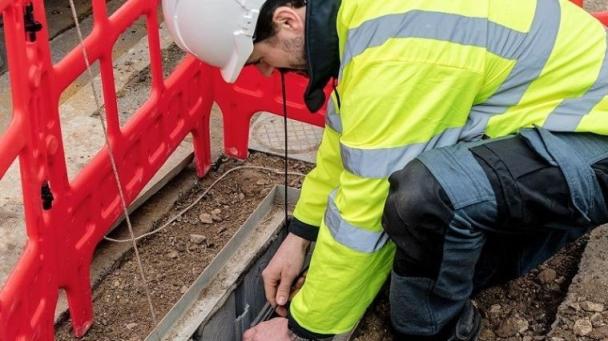
As investment continues to flood into the UK altnet space, the pool of fibre providers becomes increasingly competitive.
This will music to the ears of the Government, which is using the resultant land grab as a tool to ensure that nationwide coverage targets are hit.
But what benefits can be derived from a united approach – and how important is collaboration between altnets?
To answer this question, we asked our cohort of contributors to consider the following
-In what areas would closer collaboration between fibre providers be beneficial or otherwise?
-How do you see the competitive fibre provider landscape developing?
-Can a balance be struck between more fibre sector collaboration and being truly competitive against rivals?
Darren Baythorpe, ITS: An altnet business must be successful in its own right. However, while healthy competition exists, as the rollout of full fibre builds momentum, collaboration is not only important, it’s essential. This community has significant financial firepower behind it, comparable to the scale of many of BT and Virgin’s investments. We’re already seeing a lot more joined up thinking across the altnets, where different businesses are collaborating to better serve the customer.
For example, ITS, County Broadband, Wight Fibre and Airband have formed an alliance and developed the Common Wholesale Platform (CWP) - this gives any altnet the opportunity to offer their network to any Communications Service Provider through a common marketplace, complying with Ofcom’s One Touch Switching (OTS) directive. Subscription to the platform could harness over 1 million FTTP premises, making the combined reach of the altnets a genuine alternative to the incumbents.
Alex Cacciamani, GoFibre: Customers are always going to win when there's healthy competition between providers, but in the case of altnets they also win when there's collaboration.
Key areas which would benefit customers from a unified approach include:
* Purchasing in order to bring down costs for routers via bulk orders from manufacturers
* Wholesaling from each other to expand reach of any retail offering, and
* Creating alternative comparison and information platforms for customers to understand availability and supplier options within their location.
This collaborative approach would present a huge opportunity to move customers away from a biased eco-system of comparison sites where those ISPs with the highest marketing budget win. None of the options mentioned dilute competition, plus from a customer point of view would even help expand the level of choice, whilst improving service and affordability.
Guy Miller, MS3: The UK telecoms sector has operated successfully for many years on the principle that every other telco is simultaneously a current or potential customer, supplier and competitor. Just because we are now building next generation networks should not mean we don’t remember this.
Fibre providers need to speak with a unified voice if we want the regulators, government, the incumbents and the public to give us the credibility we deserve when it comes to playing our part in the long-overdue fibre rollout of the UK.
It may feel at times that we are fighting for the same locations or for the same resource pool but with effective collaboration we can increase the resources available to us all and maximise the awareness and ultimately the network penetration levels we all need to build long-term successful businesses.
We are operating in a densely populated, relatively wealthy nation. There is opportunity for all.
Joe Frost, Gigaclear: The biggest benefit of closer collaboration would be greater visibility on which providers are intending to build new networks in which communities and when. This would be welcomed by customers as it would help them to make informed choices about which ISP fits their needs. It would also help strengthen the commercial investment case
More competition will inevitably lead to ARPU erosion, which will cause investors to lose confidence over time and potential delays to roll outs, especially in some of the hardest to reach areas. It is inevitable that the industry will consolidate at this point, which will benefit customers through larger, more reliable and stable networks and ISPs better able to compete with ‘the big 4’. It would be ideal if a balance can be struck, but this is likely to require Ofcom, DCMS and CMA agreeing first on an acceptable level of collaboration and then determining how this would be monitored or regulated.
Andrew Wilson,CityFibre: Collaboration is essential to the success of the altnet community to ensure a competitive landscape with as close to full UK coverage as possible. By collaborating and enabling open access to each other’s networks we can limit overbuild, minimise unnecessary expenditure and focus on delivering a seamless, future-proof Full Fibre network access experience for all of our customers. It’s all about working together to ensure we deliver choices for customers and encourage innovation across the industry.
Ed Siegle, Ogi: Altnets like Ogi play a major role in the delivery of the UK Government’s Project Gigabit and digital infrastructure vision. Collectively, we bring diversity, resilience and healthy competition to the marketplace – important mechanisms in the ‘levelling up’ agenda.
Here at Ogi, we try hard not to be distracted by a UK-wide rollout – instead, focusing on bringing crucial post-Covid socio-economic benefits to underserved areas across south Wales. As a Welsh company, employing in and delivering future technology for Wales, we are investing for the long term and, more importantly perhaps, for the benefit of the Welsh economy and its people.


